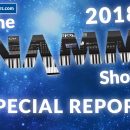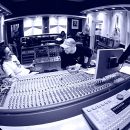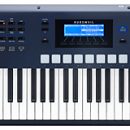 We’ve plugged into many different distortion pedals in the past and they all do as advertised: take your clean guitar signal and add distortion to it, sending the distorted signal to the amp. You'd think it was that open and shut!
We’ve plugged into many different distortion pedals in the past and they all do as advertised: take your clean guitar signal and add distortion to it, sending the distorted signal to the amp. You'd think it was that open and shut!
Some of the classics are classics for a reason—they sound great. The market is quite saturated with offerings that promise to make your Twin Reverb sound like a fire breathing Soldano or other high-gain amp. But nothing we've heard or plugged into thus far goes quite that far. There’s a certain something that happens in a tube amp that makes amp gain far more desirable to our ears than getting distortion from a pedal.
| Category | Value | Rating |
| Features | 20% | |
| Usability | 25% | |
| Sound | 25% | |
| Documentation & Support | 10% | |
| Price | 20% | |
| OVERALL RATING =3.6, which earns it a WIHO Award! 3.6 stars or better: Outstanding, WIHO Award 3 stars or better: Worth considering 2 stars or better: Suited to specific needs 1 star or less: Not recommended |
||
Most distortion pedals we've tried are pretty lousy at one specific thing: retaining clarity in chord voicings. If you've ever stepped on a distortion pedal and played a C Major 7 chord, you have presumably experienced the loss of clarity we're speaking about. A further problem with distortion pedals in general is they give your amp the pedal’s sound, which can have mixed results depending on what it does with the tone of a specific guitar.
Enter the Boss DA-2 Adaptive Distortion pedal. We’ve had this pedal juicing a few of our amps over the past few months and have gigged with it multiple times, with very different rigs and amp settings. If you thought you needed the boutique pedal brands in order to own a distortion pedal that sounds like the tone is coming from your amp instead of a pedal, then think again. You’ll be as pleasantly surprised as we were. When dialed in to its sweet spot (and not pushed), the DA-2 packs some great tone sure to enhance the output from any guitar amp. It’s definitely staying on one of our pedalboards.
Features
The Boss DA-2 is a distortion pedal—err, make that an adaptive distortion pedal. It can serve as a clean boost, but that would be a waste of the excellent sounding distortion on tap. The design goal of the pedal is to give you custom cooked distortion for the guitar and style you’re playing.
The Boss DA-2 pedal uses proprietary digital technology that tailors the distortion effect to the specific input signal of the instrument plugged into it, so the response changes based on how you play your guitar, what register you’re in, whether you’re playing big chords or legato lines, etc.
Four control knobs enable you to adjust level (volume), lows, highs, and the amount of the distortion effect. It also has a single 1/4" input and output, and it can be powered from either a 9V battery or an AC adapter. There is a red status light above the four control knobs to indicate when the effect is engaged.
Usability
This pedal is plug-and-play, and features the typical Boss built-like-a-tank layout that has proven reliable for decades. Connect the pedal to power, plug in the input from the guitar and the output to an amp, and batten down the hatches! We could use this pedal in front of any amp and obtain useful distorted tones.
We had the pedal set up and working in about thirty seconds. We placed a battery in the battery compartment, (which is easily accessible by a thumbscrew on the front of the pedal) and were up and running. We also powered the DA-2 from our trusty Pedal Power 2 Plus. A rubber base on the pedal assures it stays where you plant it (ours lives on a rack tray in a case with our amp and other pedals).
Sound
We started with all the controls at the twelve o’clock position, giving us neutral volume, low and high levels. We found these settings to be adequate during our first gig and didn't feel the need to move the knobs. At twelve o’clock, we felt the distortion effect was perfect for the modern rock and pop material being played. It turned our clean channel into a dirty one, allowing us to play searing leads and nice, chunky power chords.
Something this pedal did fantastically well was allow our chords to ring true and clear. When each string was hit one at a time and held for the chord it was perfectly audible and clear. We also noticed the effect didn’t radically change the sound of our Mesa Boogie Reborn Triple Rectifier’s vintage (moderate gain) channel or modern (face melting gain) channel; rather, it enhanced them. There is definitely something good going on in the custom tailoring of the guitar’s output to the pedal. Instead of the pedal adding its thing, it gave more beef to our thing. The distortion effect was not narrow and focused, but more open and rich. The lows remained punchy and the highs were not shrill. This pedal enhanced our amp’s overtones in a very positive way.
Toying with the pedal further, we found the low and high controls to be more like high and low reduction or enhancement. We were able to enhance or diminish the levels, but the frequency sweep sounded narrow to our ears. If you’re an EQ junkie, an EQ further down the signal path is a must. Fortunately, turning the low and high knobs never produced muddy or tinny sounds, no matter how far we turned.
The only thing keeping us from giving four stars to the Boss DA-2 was the distortion it produced when pushed. Beyond twelve o'clock, the distortion started to sound quite digital, and produced artifacts in the sound that were phasey to our ears. Turning the knob all the way to the right only enhanced what we did not like. However, there was plenty of high gain to go around up until the twelve o'clock position, and we really saw no need to dial in any more. It was wholly useable with this setting in any modern rock situation—and sounded fantastic. Lower levels of distortion also proved to be quite useable and pleasing to our ears.
This pedal’s high gain has all the complexity of many popular premium amps, such as the Mesa Triple Rectifier we tested the pedal with, and we had a similar positive experience using it in front of an ENGL Powerball II on its clean channel. Lower distortion levels were reminiscent of the tone from a Fender Blues Junior.
Documentation and Product Support
There’s an intuitive owner’s guide, which is basically just a few paragraphs explaining the unit’s operation. This is very much a plug-and-play pedal—not much to see here that isn't self-explanatory from the start. A safety manual is also included, however we've yet to ever need support for a Boss pedal. They're built like tanks and are only really unsafe when somebody is throwing one at your head.
Price
The Boss DA-2 (MSRP $210.50) sells for approximately $120. You could spend far more for far worse distortion. We feel the pedal is mid-priced in the sea of distortion pedals, and a good value.
Contact Information
BOSS
www.bossus.com
| Evaluation Short-List |
|
















